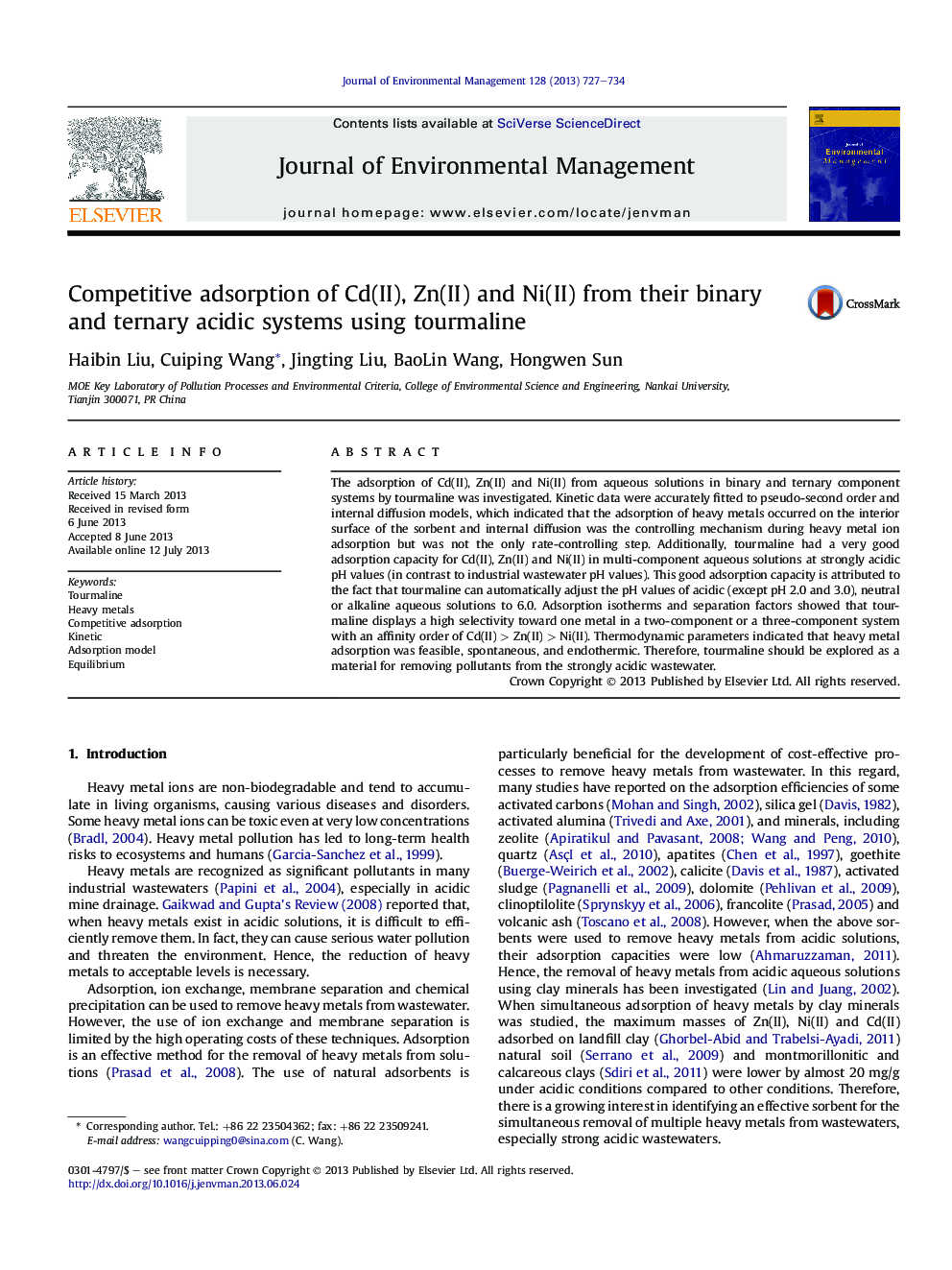| Article ID | Journal | Published Year | Pages | File Type |
|---|---|---|---|---|
| 7484435 | Journal of Environmental Management | 2013 | 8 Pages |
Abstract
The adsorption of Cd(II), Zn(II) and Ni(II) from aqueous solutions in binary and ternary component systems by tourmaline was investigated. Kinetic data were accurately fitted to pseudo-second order and internal diffusion models, which indicated that the adsorption of heavy metals occurred on the interior surface of the sorbent and internal diffusion was the controlling mechanism during heavy metal ion adsorption but was not the only rate-controlling step. Additionally, tourmaline had a very good adsorption capacity for Cd(II), Zn(II) and Ni(II) in multi-component aqueous solutions at strongly acidic pH values (in contrast to industrial wastewater pH values). This good adsorption capacity is attributed to the fact that tourmaline can automatically adjust the pH values of acidic (except pH 2.0 and 3.0), neutral or alkaline aqueous solutions to 6.0. Adsorption isotherms and separation factors showed that tourmaline displays a high selectivity toward one metal in a two-component or a three-component system with an affinity order of Cd(II)Â >Â Zn(II)Â >Â Ni(II). Thermodynamic parameters indicated that heavy metal adsorption was feasible, spontaneous, and endothermic. Therefore, tourmaline should be explored as a material for removing pollutants from the strongly acidic wastewater.
Related Topics
Physical Sciences and Engineering
Energy
Renewable Energy, Sustainability and the Environment
Authors
Haibin Liu, Cuiping Wang, Jingting Liu, BaoLin Wang, Hongwen Sun,
